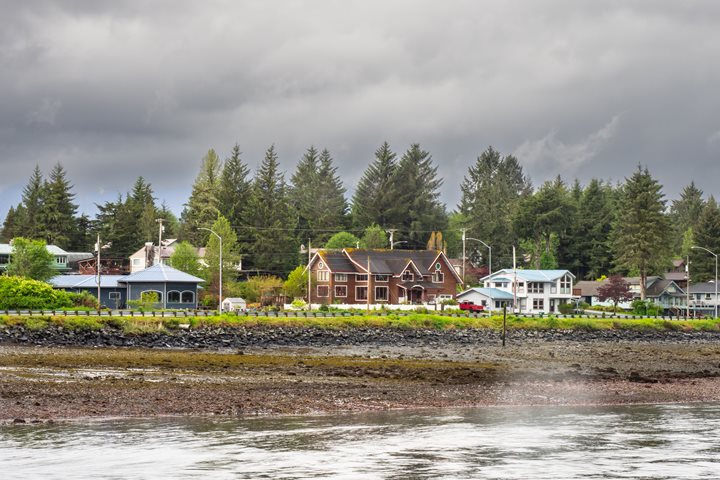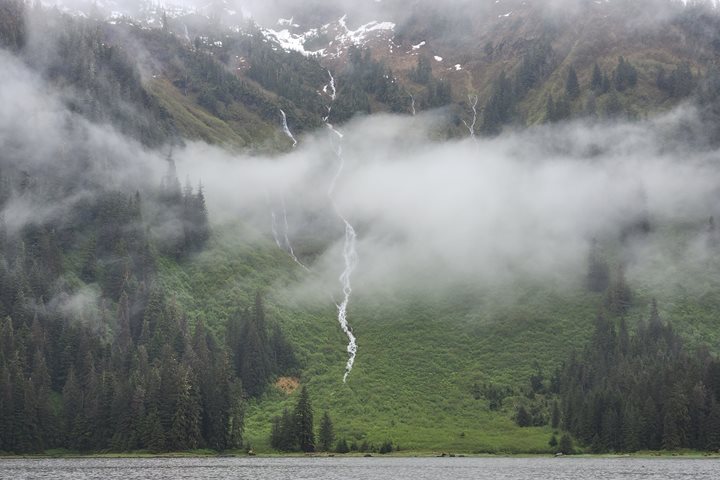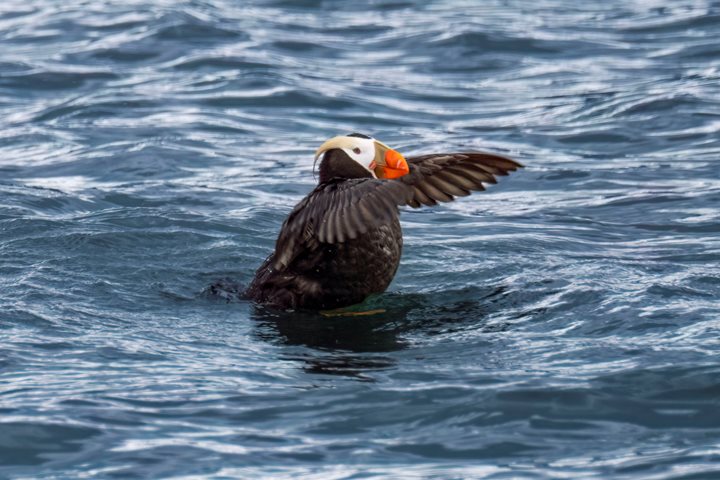In 1794, Captain George Vancouver, sailing on the H.M.S. Discovery, came to the entrance to what is now Glacier Bay. At that time, the bay was filled with a complex of glacial ice that extended to within five miles of the mouth. In the ensuing 222 years, the ice has retreated more than 65 miles, relieving the land of its massive weight, and enabling the ground to rebound between 19 and 22 feet, or about a foot every decade. Plants and animals have returned to the once lifeless environment, repopulating it with lushness and diversity. Today, some of the glaciers are once again advancing, continuing the cycle of advance and retreat that has gone on for millennia.
Early this morning, we entered Glacier Bay and picked up Park Ranger Fay Schaller and Tlingit Cultural Interpreter Alice Haldine at Bartlett Cove, about five miles from the mouth of the bay. Fay and Alice were aboard throughout the day sharing their knowledge and passion about Glacier Bay.
After breakfast we made a slow cruise by South Marble Island, home to tufted puffins, black-legged kittiwakes, common murres, and a host of other seabirds. It is also a significant haul out for Steller sea lions. We not only had fabulous views of the wildlife, the sea lions treated us to a chorus of growls and belches, as the powerful scent of their consumed, digested, and expelled fish diet added to the sensory experience. But wait…
Killer whales! For the next hour and a half we were treated to a killer whale extravaganza. We had close up views of these largest members of the dolphin family, as they swam by, breeching and performing other “orcabatics”. We could hear their high pitched communications on deck and through the hull. Observing some especially rambunctious activity, we realized that the whales had made a meal of one of the sea lions.
Just before lunch undersea specialist Carlos spotted a black bear walking along the shore. The bear turned over an occasional rock in search of any culinary treat that might be underneath. Ambling through the intertidal zone, Ursus americanus afforded us great views and photo ops.
Making our way towards Jaw Point, the entrance to Johns Hopkins inlet, we passed two tidewater glaciers–Reed and Lamplugh. The view from Jaw Point is… jaw dropping. Five miles ahead is the face of the Johns Hopkins Glacier, perhaps the most impressive sight in this national park that is full of impressive sights. Making our way towards the glacier face, the walls of the fjord towered above, and floating ice and harbor seals were sprinkled on the milky water, full of finely ground soil that the glacier had mined from its valley. After enjoying a close up view of this magnificent river ice, we headed back down bay, taking in the scenic wonders of our national park.
After dinner we had an opportunity to hike and explore on shore before returning to our floating home to enjoy a presentation by award winning local author Kim Heacox. Kim shared stories of life in Alaska and read passages from his books.









